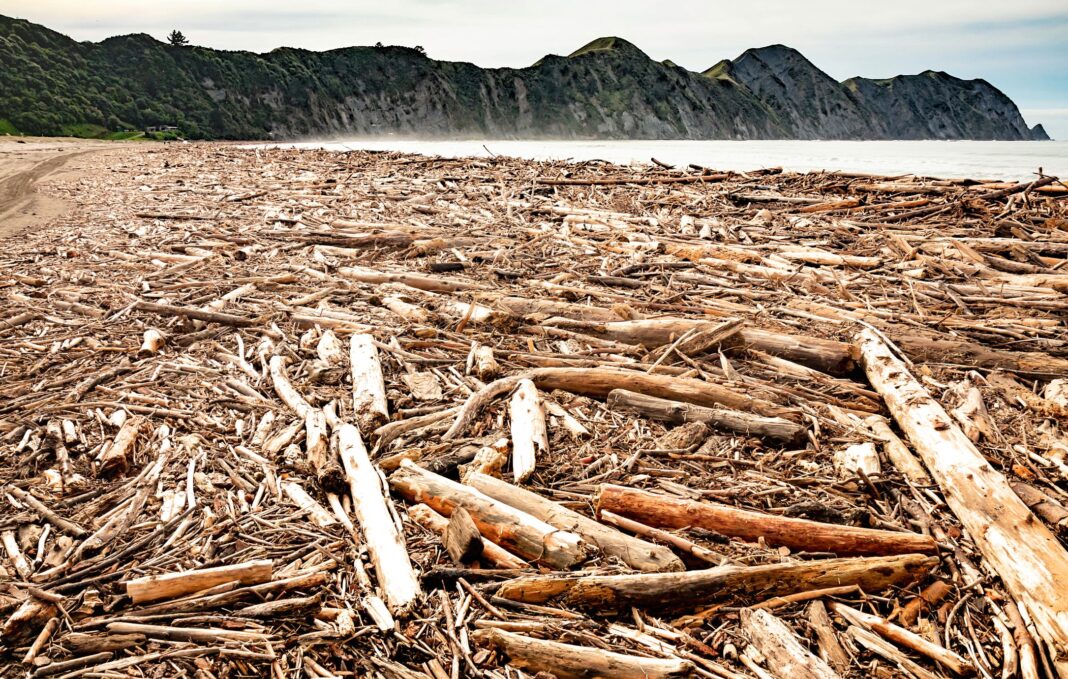One year after Cyclone Gabrielle wreaked havoc on New Zealand’s forests, foresters are now using computer technology to better monitor and protect forest areas from slash.
Described as “an environmental crisis in the making,” slash-induced damage led to the former Hipkins government introducing new forestry slash and exotic plantation rules, enforceable from October last year.
Now, Rotorua-based Interpine Innovation has taken a 50-year method for measuring slash, known as the “Wagner Waste model”, and turned it into a highly accurate, digitised model to measure post-harvest levels.
Already, two major NZ forest companies are trialling the technology, going as far as using the risk mitigation profile to provide information on the stability and safety of skid site slash piles. Three others are in the wings, while a trial with a regional council is also pending.
It came after the company used AI technology and drones to detect windthrow or toppled trees and quantify damage, whereby it uses LiDAR and aerial technology to help manage recovery from natural disasters at scale.
As reported by NZ-based Farmers Weekly, the new tool promises to ensure forest felling does not turn sites into time bombs ready to detonate in the wake of future Gabrielle-like events.

According to Interpine CEO Te Kapunga Dewes, who secured the NZ Forester of the Year Award last year, the new technology will, for the first time, allow foresters to assess feeling completeness and reconcile yield estimates.
He said the “Wagner Waste method” has been used for almost half a century to estimate volumes of remaining forest waste by sampling along transect lines.
“But Gabrielle came along, and the focus has now become more on compliance and what we need to do better as an industry,” says Interpine CEO Te Kapunga Dewes.
The recent release of forest slash rules limiting pieces to no more than 2m long, 10cm wide and under 15 cubic metres total per hectare has put the onus on the sector to help protect downstream land.
Anticipating the sector’s need for accurate assessment, Interpine has developed a technology package that will take a “whole of-site” approach to measuring forest residue waste and evaluating it against the new National Environmental Standards.
“The 15 cubic metre requirement is particularly subjective when you just use a sample-based method, with a high level of variability between sample areas, meaning volume estimates do not always represent the entire site,” according to Mr Dewes.
Using drone-based LIDAR remote sensing with photogrammetry tech linked to deep learning software enables Interpine’s solution to measure forest waste across the logged site rather than rely on a variable sample estimate.
“The tech can compare the compliance requirement against what is on-site, right down to specific pieces of timber, identifying those that may exceed the regulations. You can walk over and touch the timber the technology identifies.”
According to Mr Dewes, the technology goes further: “incorporating slope, soil and watercourse inputs enables it to render a risk profile for the site, highlighting specific areas within its footprint that may require more attention.”
Mr Dewes says the technology is a progressive move by his company, recognising the industry has needed to improve how it cleans up sites and be more accountable.
“And we are proud that this is home-grown technology based on a stand-level approach to the site, not a sampled approach. It’s using locally developed tools for local problems,” Mr Dewes said before adding, “Operators can go out, hand on heart, and say they are 100% meeting their compliance requirements and can step up further from there.”
Cyclone Gabrielle was first noted as a developing tropical low on February 6 2023, near the Solomon Islands, before it was classified as a tropical cyclone and named Gabrielle by the Australian Bureau of Meteorology.
Striking New Zealand between February 11 and 17, 2023, it caused significant damage, making it the costliest tropical cyclone in the Southern Hemisphere. Total damages now exceed NZ$13.5 billion, with insured damage costs reaching at least NZ$1.73 billion.
In the year since the Cyclones, forest crews are still racing against the clock to harvest 6,500 hectares of trees, or about 3.5 million cubic metres of wood, to be exported to China and South Korea over the next few months.







